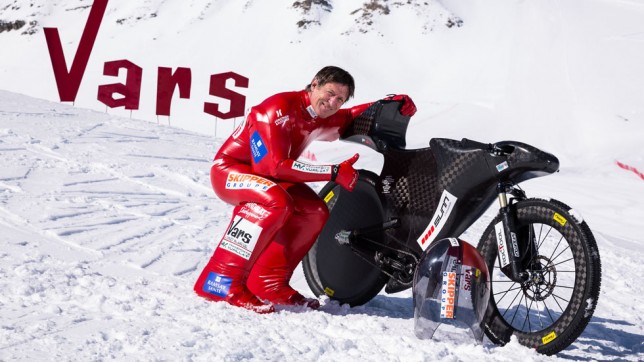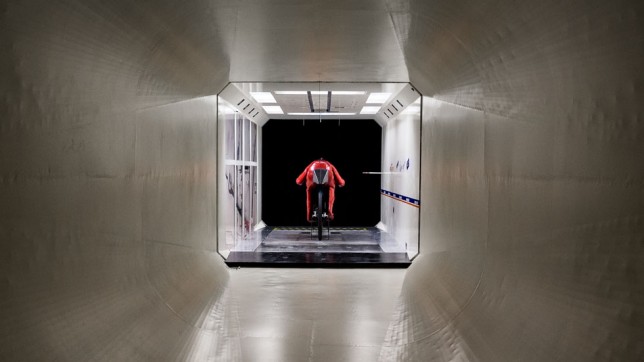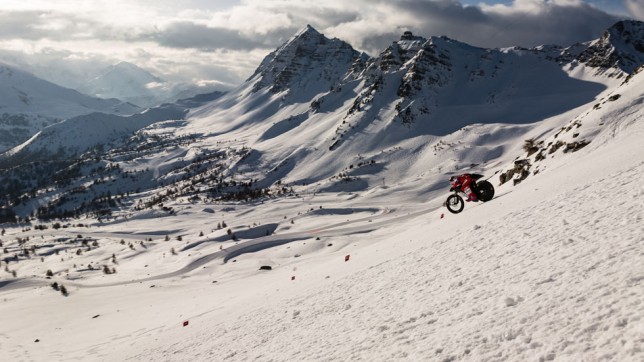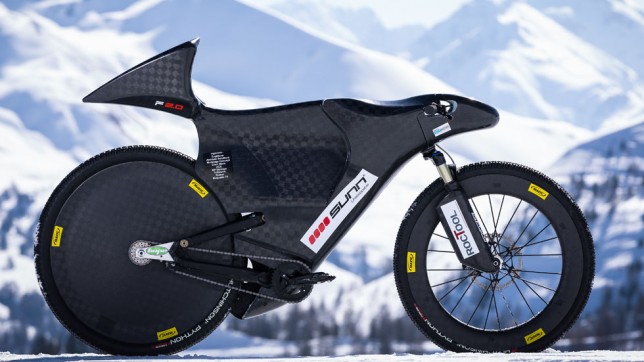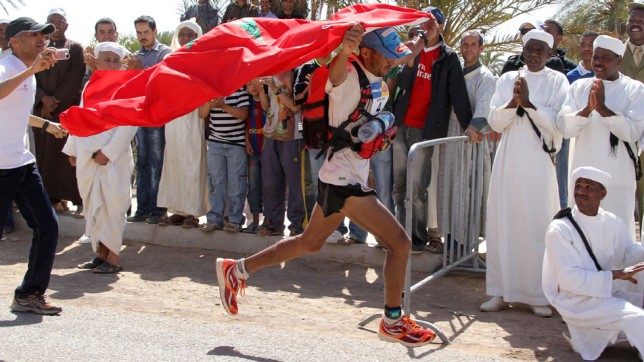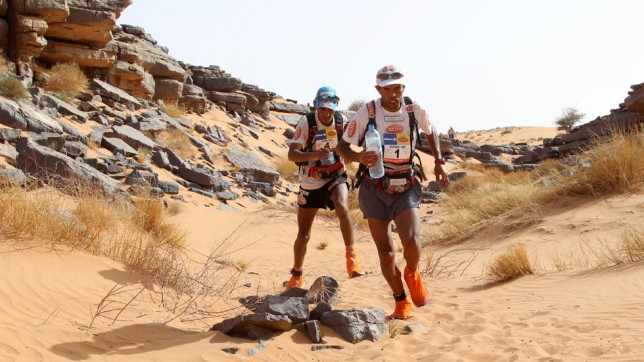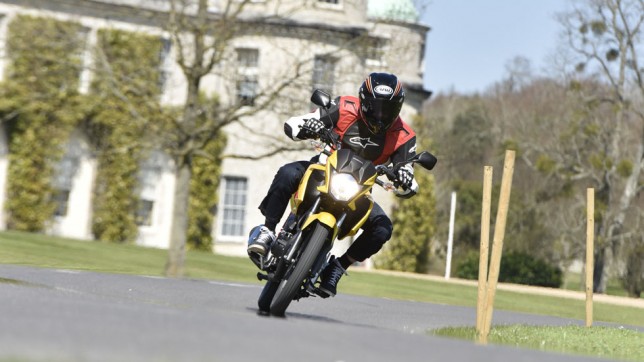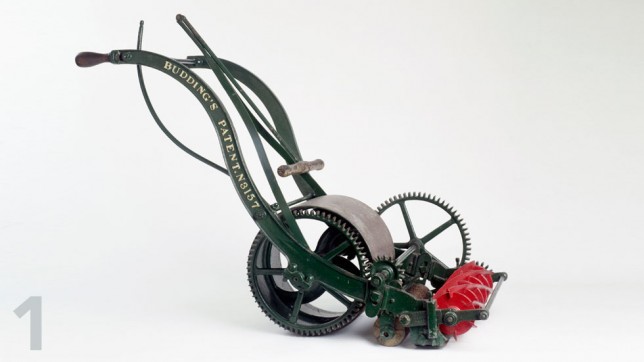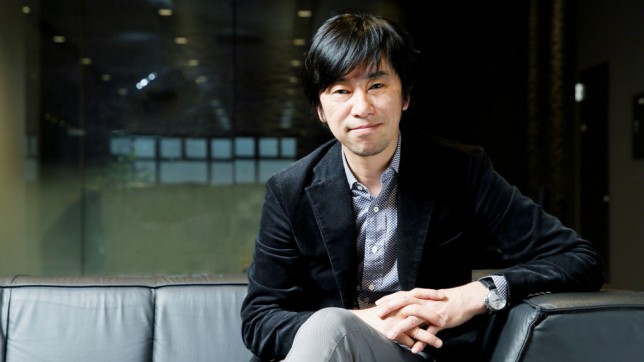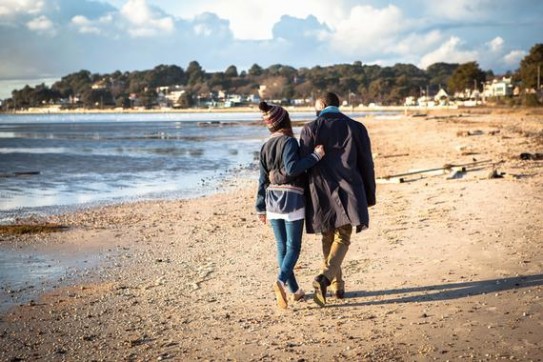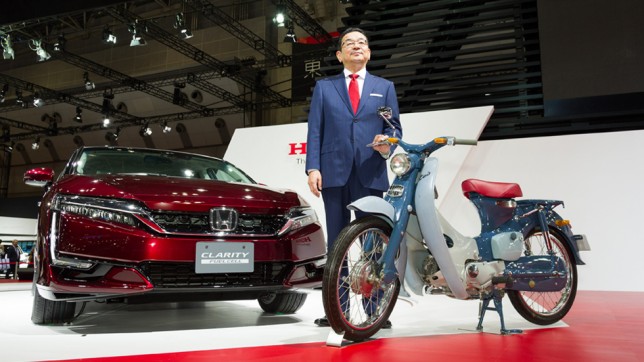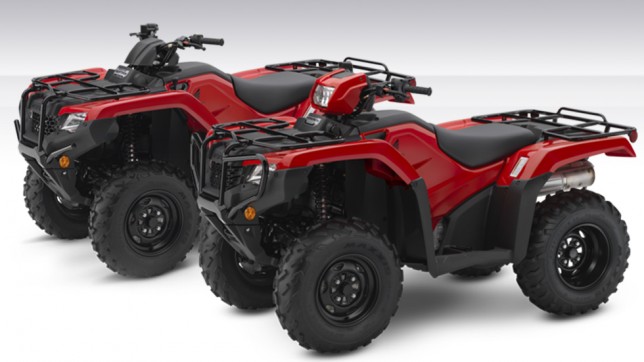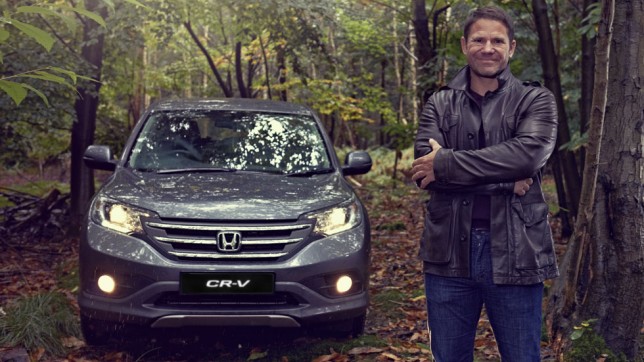Eric Barone fought back from a terrible accident to complete a world-breaking downhill run on a mountain bike. Rachid El Morabity overcame poverty and injury to win the world’s most extreme marathon for the third time. Very different triumphs in snow-covered mountains and arid desert, but the two men are united by a drive to challenge their own limitations.
It was on 28th March this year in Vars, France, that sportsman and stuntman Eric Barone teetered precariously at the top of the steepest ski run in the world in a howling gale, pushed his mountain bike to the edge and then simply rolled over the top.
Seconds later, he had beaten his own world record for the fastest speed achieved on a mountain bike on snow at 138.75mph. It’s an incredible feat of bravery and skill – as is the story of Eric, his amazing aerodynamically sculpted bike and the team who worked tirelessly to make this possible.
The man behind the record
It was the French athlete’s incredible technique, honed over many years of such attempts that made the record attainable. Barone – also known as Le Baron Rouge because of his red speed suit – is 54 years old.
After experiencing a huge crash while riding down the side of a volcano in Nicaragua in 2002, he takes safety incredibly seriously. The accident, in which he broke six ribs and his femur bone, tore both of his shoulders and badly damaged his hand, meant it was eight years before he could bring himself to get back on two wheels.
The power of engineering
However, in 2012 he returned to his passion, hitting over 120mph at Les Arcs, France, on a standard downhill bike. To go significantly faster he’d need something engineered specifically for the job, which is where Marc Amerigo, trusted friend and lead aerodynamic engineer on the project comes in…
‘We had to design a bike that would reach two different goals which are quite opposite,’ explains Amerigo. ‘The first is safety, but that also means something very big. And that’s not good for aerodynamics. The key was to make something very strong but very thin and with great performance.’
The perfect tools for the job
The project started with a standard downhill mountain bike with small aerodynamic fairings, but to attain higher speeds a more radical approach was required. A new bike was developed with completely different kinematics (the motion of the mechanical parts as they work together), new suspension and much-improved aerodynamics honed in the wind tunnel. Over nine months in 2014 this amazing machine and its extremely aerodynamic carbon fibre fairings was developed and tested, until they had the perfect tool for the job.
Down to experience
Even so, Barone had a massive job to do. ‘We made all the calculations in the wind tunnel,’ explains Amerigo, ‘but the weather in the real world is a more dynamic situation. Then it’s down to experience. Do we go or not? That’s the special part.’
‘This record is a tremendous one,’ says Amerigo. ‘The first 300 to 400 metres were solid ice – very bumpy and dangerous and Eric was maybe 40kph (24mph) down on the speed he needed at the halfway point. He was really working to control the bike. About halfway down the surface improved and he had to switch to being focussed just on getting into the most aerodynamic position and gaining as much speed as possible. It was quite incredible to achieve this.’
The bond and trust between Amerigo and Barone is clear. ‘This guy is full of energy and love,’ says Amerigo, ‘he brings people together. That’s because he has big values in life. He can cry like a baby and on the other side he’s so strong. A great person.’ Expect more from Le Baron Rouge and his team. After all, records – even his own – are there to be broken.
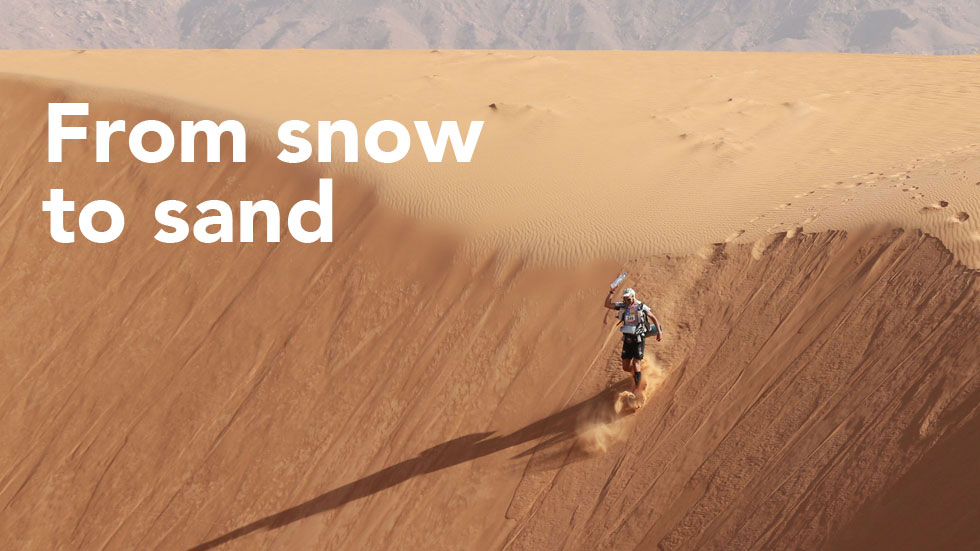
The Marathon des Sables started in 1984 when Patrick Bauer trekked across the Sahara alone
From snow to sand
From ice and snow to sand and searing heat, there are other ways to push the boundaries of what’s possible, ways that anybody can attempt, given the required training and a deep inner determination. This something that 2015 Marathon des Sables winner Rachid El Morabity knows very well.
This extreme endurance event for runners and walkers is held in one of the most inhospitable places on earth, the Sahara desert. Over six days competitors must cover 156 miles – a full marathon per day – and be entirely self-sufficient, carrying their own food, water and camping equipment.
Inspiring thousands
The event’s extraordinary story started in 1984, when French concert promoter Patrick Bauer trekked across the Sahara alone and on foot. In ’86 the race was run for the first time with 23 competitors. This year over 1,300 people from all over the world started the race. Some were professional athletes, others committed club runners and all there to face the ultimate challenge.
Determination of a winner
After six days, 33-year-old Moroccan runner El Morabity won the event outright, and has become a celebrity in his home country. He first won in 2011, was then dogged by injury (a femur break in 2012), but came back to win in 2014. This year, he eeked out a small advantage every single day, slowly but surely breaking the competition, and won by just under 14 minutes, leaping across the finish line, his fist punching the air.
The total time stood at 20 hours, 21 minutes and 39 seconds. It’s a remarkable achievement, and again it’s testament to determination and team-work, but of a very different kind. El Morabity comes from Zagora, a small, poor town in southern Morocco on the edge of the desert. Growing up, he and his friends walked and ran everywhere, school was four miles away and there were no bikes or buses.
One of them, Mohammed Ahansal, grew up to win the Marathon four times and he in turn trained El Morabity. ‘When someone comes out of the desert and there’s nothing there, no trainer, no sports stadium, nothing it’s not easy,’ he said. But he gave everything he could to his young protégé. In fact El Morabity did his first Marathon with running shoes passed on to him from Mohammed, who’d been given them by friends because he was too poor to buy his own. ‘Alone nothing is accomplished,’ he says.
Now the runners from Zagora are part of the Rahal Groupe and train together, developing systems for tackling the difficult terrain, such running in a zig-zag up the steep sand dunes. ‘Some of the other runners, they go directly up the hill,’ says El Morabity. ‘They don’t notice the secret.’
Not for them the gels and energy bars of modern sportsmen, they power up with traditional foods such as rice, dates, nuts and honey. But what this group lacks in outside support has thrown them back on their own inner resources and shown the world that’s enough to push through boundaries and achieve the impossible.
‘I’m used to the same conditions, this boosts my confidence and is why I won 2014,’ said El Morabity after this year’s win. ‘That gave me the confidence I am not less than the other competitors. I have such confidence that I can win, so I went to Marathon des Sables to win.’
As his friend and trainer Mohammed says, everything they lacked has become an advantage in this gruelling sport: ‘It’s not a luxury life, and that’s where you learn he resistance, the endurance. The people are the same, but the life isn’t.’




